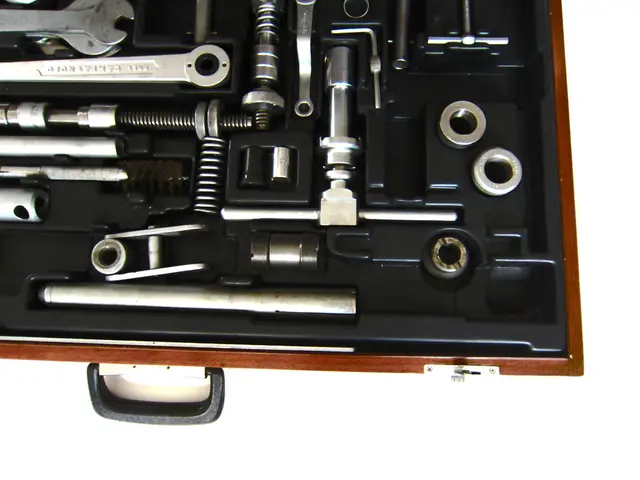Scientists Manufacture Adhesive Strands Capable of Retaining Objects Akin to Spider-Man's Webbing!
In a groundbreaking development that brings science fiction to reality, researchers at Tufts University have created an innovative system inspired by Spider-Man's web-slinging ability. This new technology, made from artificial spider silk threads, holds significant promise for the fields of robotics and materials handling due to its unique combination of strength, toughness, and adhesive properties.
The diameter of these silk fibres can be adjusted by varying the needle size, ranging from human hair thickness to about one millimeter. This versatility allows for a wide range of potential applications.
In the realm of robotics, these threads offer intriguing possibilities. For instance, they can shoot strong, sticky threads that latch onto objects and pull them back, mimicking Spider-Man's web function. This capability enables robots to grasp, hold, and retrieve items with precision and flexibility, especially in complex environments where traditional grippers may struggle.
Moreover, the toughness and extensibility of spider silk-like materials could allow climbing robots to anchor themselves securely on surfaces, improving their ability to navigate vertical or irregular terrains. The high resilience and energy absorption of artificial spider silk threads are also beneficial for developing soft robotic components that require strong yet flexible materials capable of withstanding repeated stress without failure.
In materials handling, these threads offer a host of potential benefits. They are known to be five times stronger than steel by weight while also highly tough and flexible. This allows for the creation of lightweight ropes, cables, and tethers for lifting or securing loads while minimising added weight and maximising durability.
The sticky properties can enable reusable connections or bindings that can attach and detach without damage, improving efficiency and reducing wear in handling and packaging processes. Additionally, the unique stress-absorption traits of spider silk-inspired materials suggest potential in impact-resistant coatings or wraps to protect delicate objects during transport and handling.
As production methods improve for synthetic spider silk, scaling up will enable broader industrial use. Integration with smart materials and sensors could yield adaptive gripping and handling systems in robotics capable of real-time adjustment. Biomimetic designs incorporating spider silk properties may inspire new classes of resilient, multifunctional materials combining strength, flexibility, and adhesion, transforming fields like logistics, manufacturing, and rescue robotics.
This innovative research has the potential to revolutionise the material handling and robotics industries, offering new ways to transport goods efficiently and safely, and enhancing robots' ability to interact with objects with precision and flexibility. The future prospects are indeed exciting, with ongoing research paving the way for advanced applications across multiple industries.
- The innovation in artificial spider silk threads, derived from research in science, could significantly boost health-and-wellness and fitness-and-exercise sectors, as the material's resilience and energy absorption properties lend themselves to creating impact-resistant coatings or wraps to protect delicate sports equipment during transportation and handling.
- In the realm of entertainment, biomimetic designs inspired by spider silk properties may lead to advancements in motion-capture technology by creating materials capable of adapting to various surfaces and movements for more realistic and accurate virtual representations.
- As researchers continue to explore spider silk's potential, they may uncover applications beyond robotics and materials handling, such as in technology fields like data storage, where the unique combination of strength, toughness, and adhesive properties could lead to secure and dependable systems for retaining and transmitting information.
- The momentum generated by this research in science and technology has spurred interest in the development of multifunctional materials capable of merging strength, flexibility, and adhesion. In the future, these materials could transform industries, including science, HEALTH-AND-WELLNESS, FITNESS-AND-EXERCISE, entertainment, and logistics, by delivering innovative solutions to real-world challenges.






